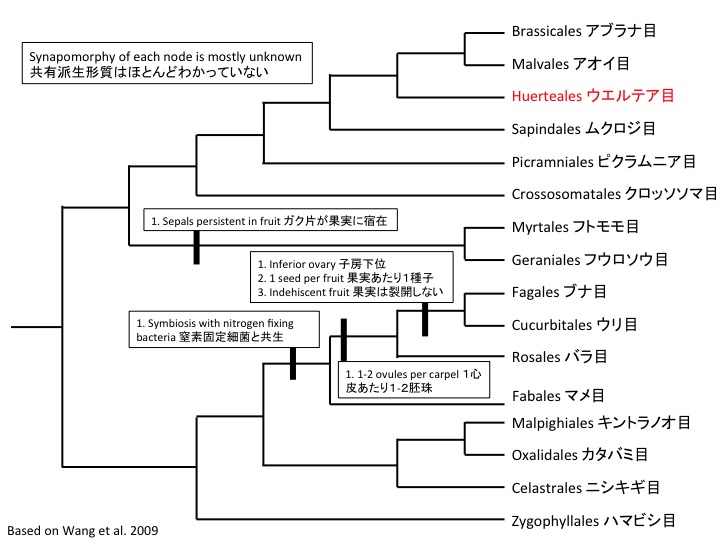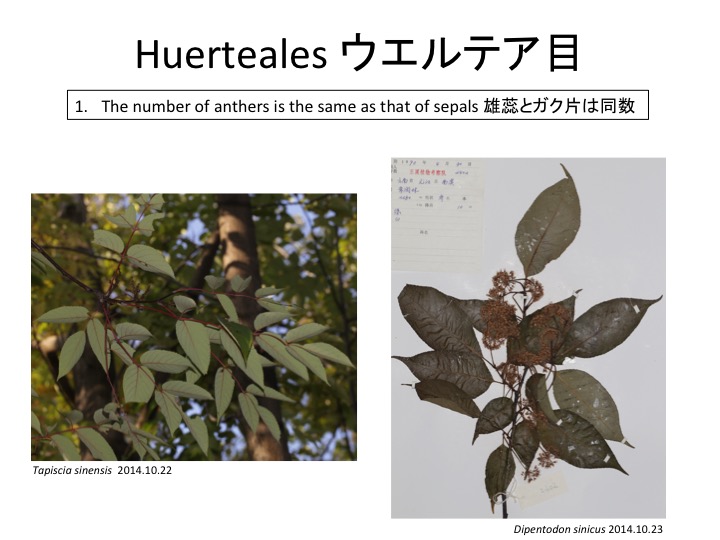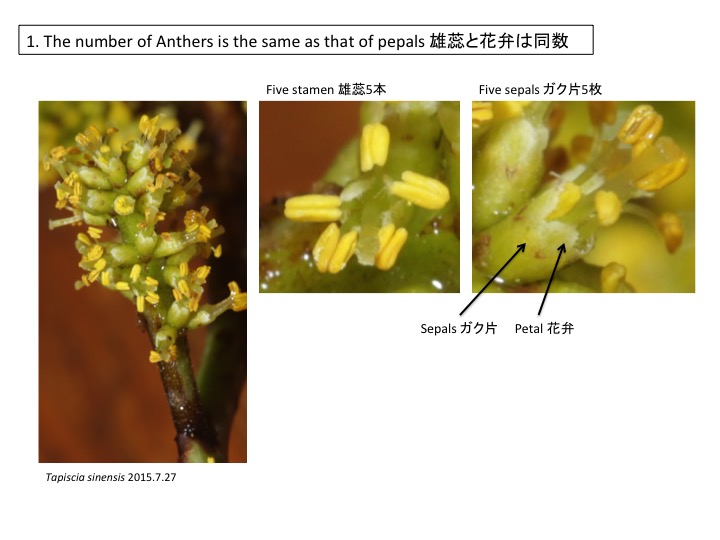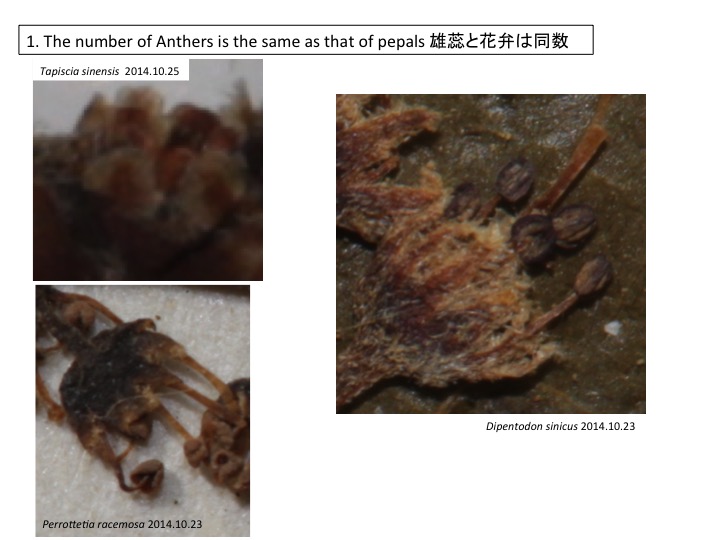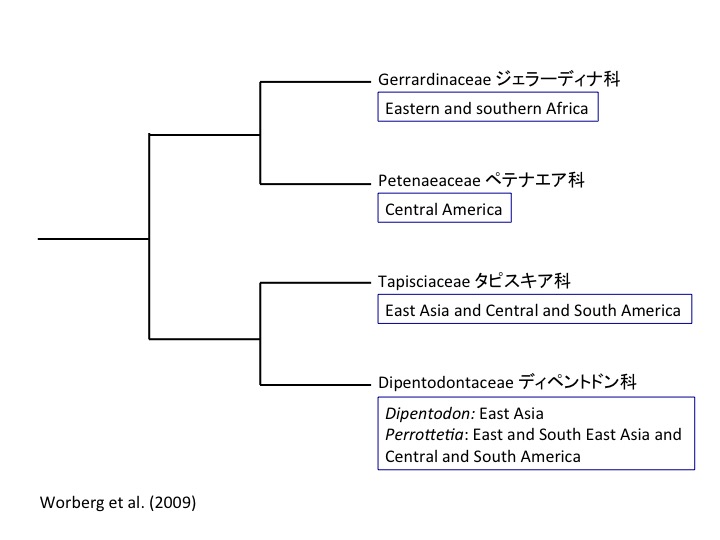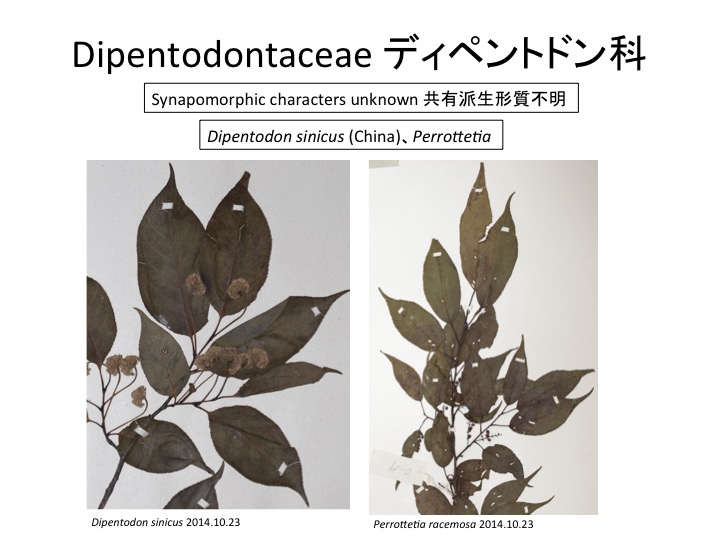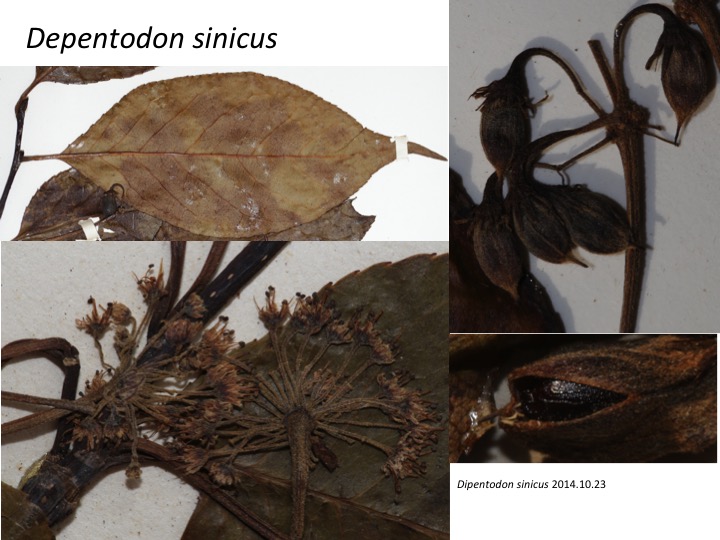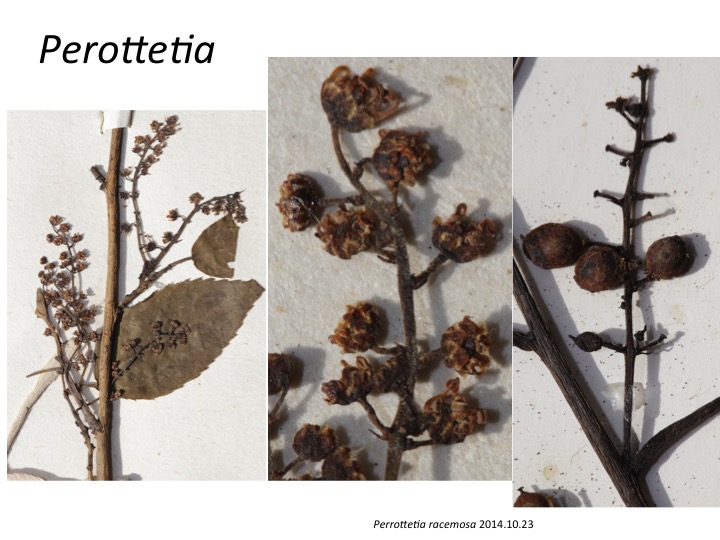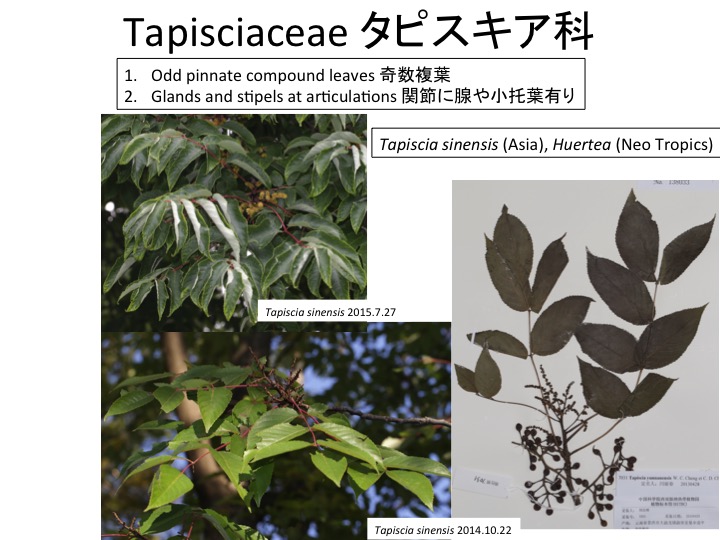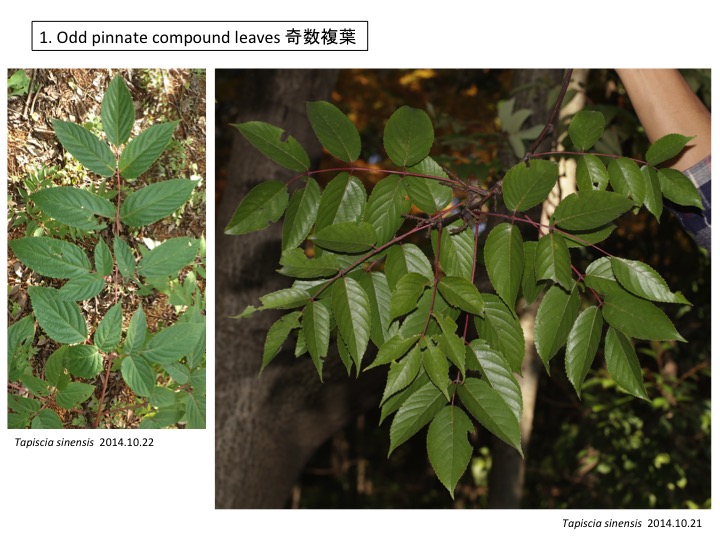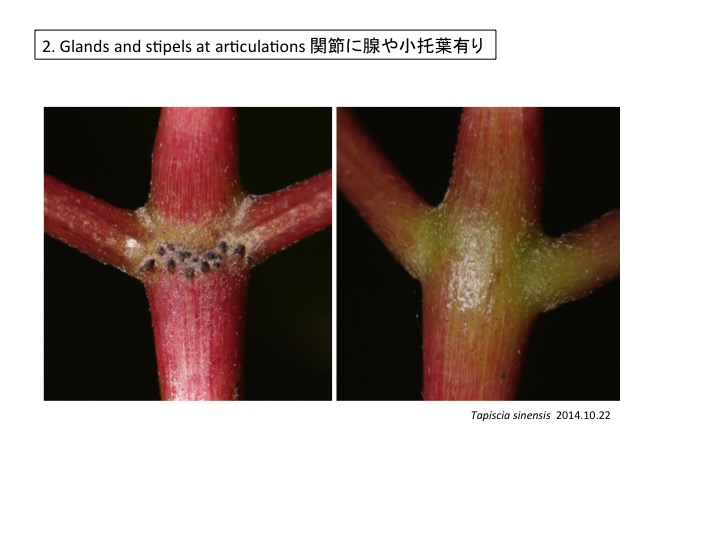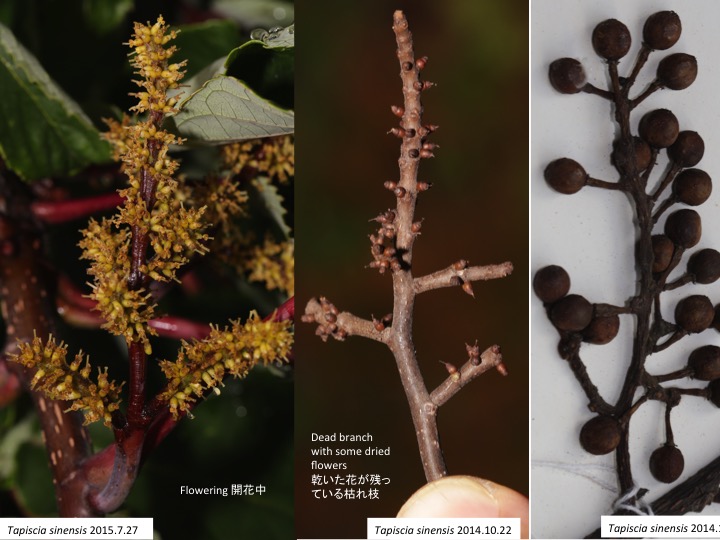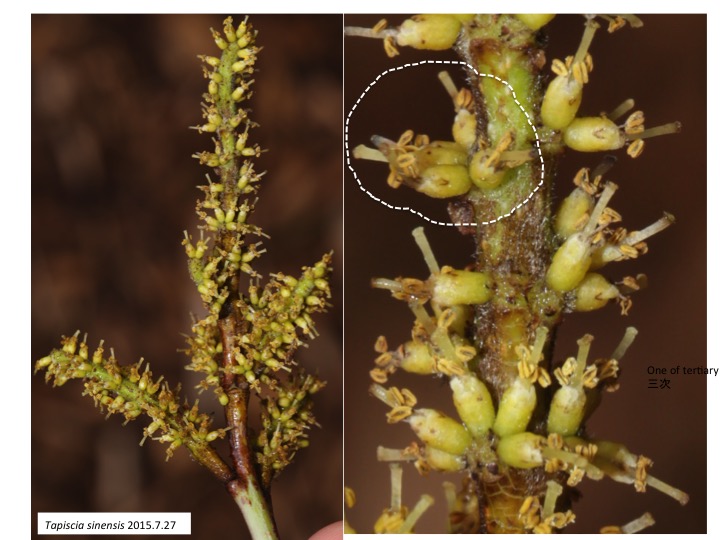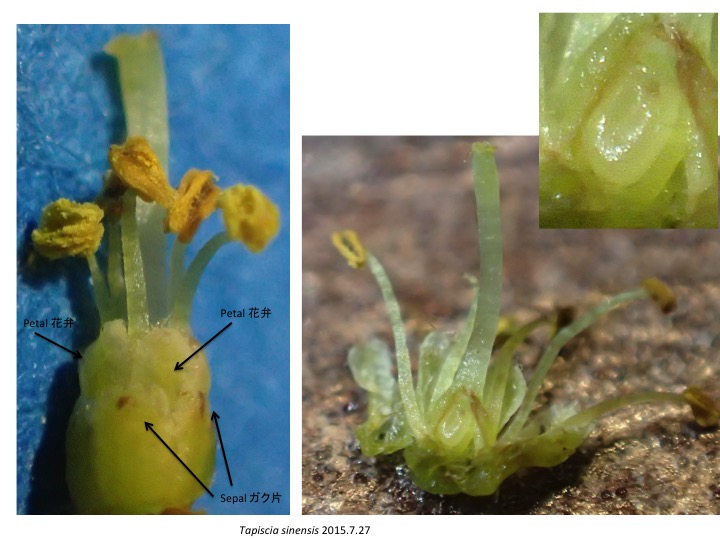Wang, H., Moore, M.J., Soltis, P.S., Bell, C.D., Brockington, S.F., Alexandre, R., Davis, C.C., Latvis, M., Manchester, S.R., and Soltis, D.E. (2009). Rosid radiation and the rapid rise of angiosperm-dominated forests. Proc Natl Acad Sci U S A 106, 3853-3858.
近縁目であるムクロジ目、アオイ目、アブラナ目の多くは花弁の2倍以上の雄蕊を持つ。ウエルテア目の花は他の目と較べるとせいぜい5 mm程度と小さいので、花サイズの縮小が雄しべの2輪から1輪への輪数の減少と関係するかもしれない。花の大きさや花器官の輪数の制御機構は未解明。
Sapindales, Malvales, and Brassicales usually have two times or more stamens than petals. The small size of flowers of the Huerteales may be related to the reduced number of stamens. Mechanisms to regulate flower size and the whole number are unknown.
Huerteales ウエルテア目 は4科を含み、東アジア、東南アジアと中南米とアフリカに隔離分布する。
Huerteales contains four families and is disjunctly distributed in East Asia, Africa, and Central and South America.
Worberg et al. 2009. Huerteales sister to Brassicales plus Malvales, and newly circumscribed to include Dipentodon, Gerrardina, Huertea, Perrottetia, and Tapiscia. Taxon 58: 468-478.
開花時には全ての花の花梗が無いように見えるが(写真左、中)、受精した花の花梗は種子成熟中に伸長する(写真右)。細胞分裂、細胞伸長、あるいはその両方を空間的時間的にどのように制御するかによって形態多様性が生み出されている。受精した花だけ花梗を延ばすのは無駄な花梗を作らなくて良いので適応的かもしれない。ただ、Tapiscia sinensisのように小さな花でないと花梗の無い密な花序は作りようが無いけれど。
Pedicels are not recognized by eyes (left and central photos) when flowering, but they elongate at maturation of seeds (right photo). Spatial and temporal regulation of cell division, cell expansion, or both contributes morphological diversity of flowering plants. This may be efficient to reduce cost to make pedicels even for unfertilized flowers, although it is possible for small flowers, which can be compactly arranged as in Tapiscia sinensis.
Tapiscia sinensisの花序は、一次花序軸と二次花序軸は伸長するが、三次花序軸と花梗は伸長しない。どのような仕組みでこれらの器官を区別しているのだろうか。
In case of an inflorescence, each length of first, secondary, tertiary inflorescences sometimes varies. In Tapiscia sinensis, first and secondary inflorescence axes elongate but tertiary inflorescence axes and pedicels do not. What mechanisms do distinguish such organs?
Tapiscia属はガク片が癒合する、雌しべあたり胚珠が1個という点で、ガク片が癒合せず、雌しべ当たり2個の胚珠を持つHuertea属と異なる。
Fused sepals and singular ovule in Tapiscia are different from separated sepals and two ovules per gynoecium in Huertea.

